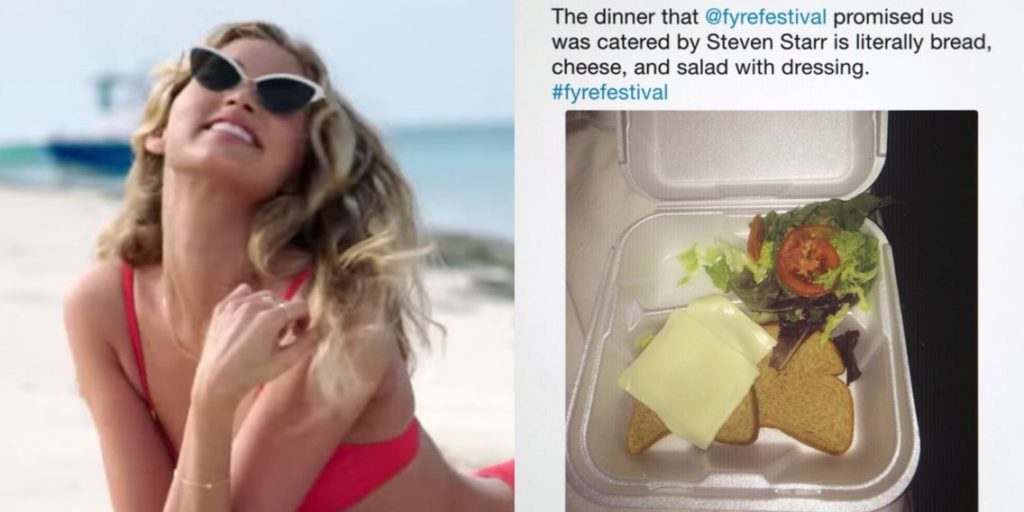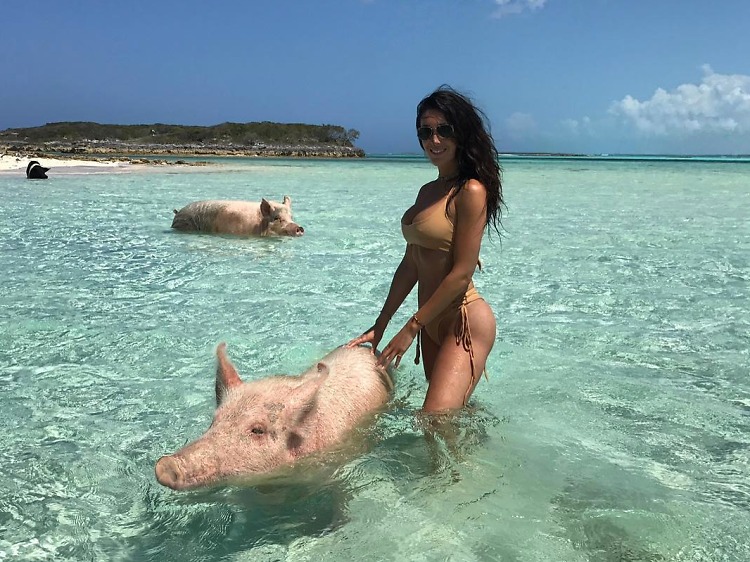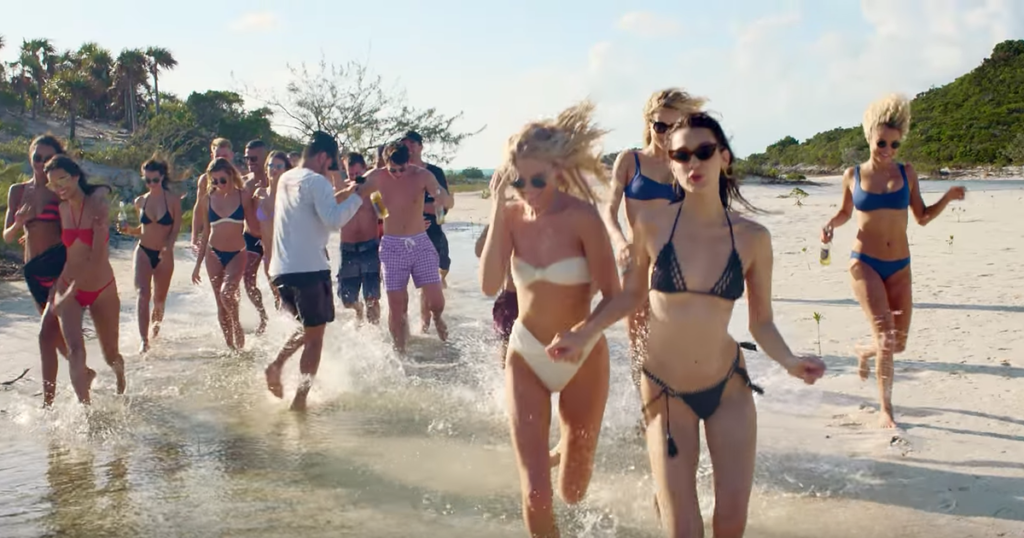By Paul La Rosa [@paullarosa]
You may have heard something about the Fyre Festival, the disastrous music non-event held in April 2018 on the island of Grand Exuma in the Bahamas. I did but wasn’t paying all that much attention until this weekend when Hulu and Netflix each released their own documentaries on the fiasco.
A quick refresher. Sometimes soon after President Trump was elected, a millennial “innovator”/scam artist named Billy McFarland got it in his head that he would cheer everyone up by holding a gigantic music festival in the Bahamas that would rival Coachcella.
It wasn’t a terrible idea but Billy M. began by shooting the video for the event before finding a suitable location. It is evident in both docs that Billy is quite the bullshit artist and he convinced some of the world’s top models and a very slick marketing agency to help him shoot that sumptuous video. The video, mainly featured in the Netflix doc, is total eye candy with gorgeous models swimming, riding jet skis and frolicking with pigs (in case you haven’t heard…swimming with pigs is the thing to do in Grand Exmuma).
Billy even lined up some famous bands, picked a date and began flooding Instagram with news of the event. Many many tickets were sold before Billy had a suitable location and, by suitable, I mean before he and other organizers realized that you need electricity, plumbing and bathrooms to host a festival, no matter how many cute models you have on hand.
A single Instagram post by Kendall Jenner, for which she was paid $250,000, made Fyre Festival THE event to attend. Because of poor planning, no music was played and the event became a legendary fiasco with rich millennials and so-called influencers trapped on an island eating cheese sandwiches with nowhere to go to the bathroom except the sea.

Enter Hulu and Netflix and their mad dash for content. Simultaneously, they produced two slick documentaries that are each well-produced but very different.
To a storyteller like myself, it’s fascinating to see the differences and the similarities because, as we all know, there are many ways to tell the same story.
The Netflix doc tells the story of the festival in chronological order while the Hulu doc starts at the end and backs into the story. I found the Netflix approach more compelling; I was on the edge of my seat to see how the event would play out. The Hulu doc gives you a lot of that at the very beginning.
One big difference is that Hulu was able to interview the event’s villain, Billy McFarland who is now serving a six year prison stretch for his fraud. Hulu reportedly paid Billy in the six figures for the interview but doesn’t pull any punches. The producers ask him very tough questions to which Billy either stares blank-faced or says “I can’t comment.”
The Hulu doc is much more about Billy for better and for worse. I was craving more about him after watching the Netflix doc which I viewed first. I got all I wanted and more from the Hulu doc. It’s much tougher on Billy the BS artist but also features his loyal model girlfriend and that’s a problem. No one wants to see Billy rewarded in any way, least of all with the love of a beautiful woman.
Overall, the Hulu doc takes a larger view of society and the influencer culture that opened the door for a scam artist like Billy who, by the way, continued his fraudulent ways while he was out on bail for the original charges. It’s hard, after seeing Billy exposed this way, to believe anyone would invest another dime with this guy. The jury’s out on that.

The Hulu producers made a wise choice when they picked New Yorker writer Jia Tolentino to provide context and commentary. Her original voice and keen insights carry the heavy lifting of explanation.
As for the Netflix doc, it’s more about the festival and doesn’t stop to consider the context of what was going on in our society to allow such a colossal flop. But that choice doesn’t hurt it; it fact, by taking a limited view, the Netflix documentary moves faster.
The Hulu documentary forces you to think but loses steam after its first incredible 20 minutes. It’s still quite good (who can resist seeing Billy squirm in the chair even if he is wearing expensive black jeans?) but, if you only want to watch one, Netflix is probably for you.
It’s also the one to watch if you’re thinking right about now, “Why should I watch either one; I hate these rich punks!” Good point but Netflix humanizes those who truly suffered–the hardworking men and women of Grand Exuma who worked day and night and mostly were not paid. You can’t help feeling bad for cook Maryann Rolle who tears up when she thinks of the $50,000 she lost paying for all that food. (Some started a fund-raising campaign that has raised $123,000 as of this writing.)
I would make the case that you should watch both. Yes, there are many of the same characters and much of the same footage but the devil’s in the differences. Characters who seem important pop up in one doc but are completely absent in the other. And there is a killer anecdote about water and a blowjob you’ll only see in the Netflix production.
So watch both, especially if you’re snowed in or it’s a dreary rainy winter’s day. If nothing else, the water and the models help offset a cold winter’s day.



What’s fascinating Is how social media made the festival take off in peoples minds/imaginations well before it was a reality — starting with the orange screenshot that was sent out by everyone simultaneously (including Kylie) to launch the campaign. A lot of clever marketing and social outreach which then backfired when somebody else set up a website asking questions and raising concerns towards the end.
Yes and it’s interesting that some people are saying the marketing company should also be held responsible when they were aware it was a charade, as they’ve admitted.